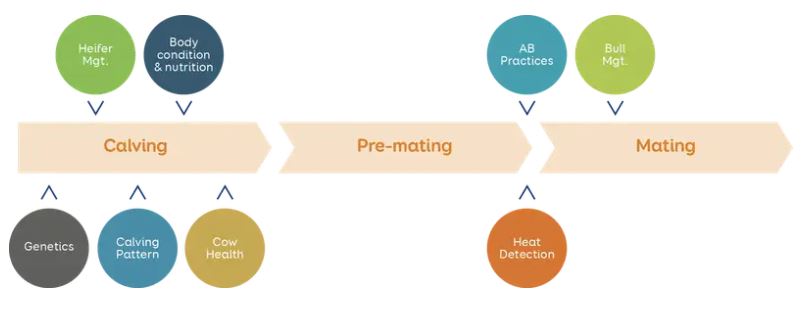Getting the herd back in calf quickly is like baking a ‘fertility cake’, with the eight key ingredients listed below contributing to the mix at the right time throughout the year.

![]()
High-gBW bull teams, mated to the right cows, breed high-yielding, emissions-efficient replacements.
![]()
Heifers that achieve liveweight targets at 15 months will get in-calf and calve faster. Those that achieve targets at 22 months of age are more likely to resume cycling early and conceive quickly as first calvers.
![]()
Strive for at least 88% of your cows to calve within the first six weeks of the calving season. This creates more days in milk and more time for cows to recover before mating.
![]()
Mature cows should reach a body condition score (BCS) of 5.0 (NZ BCS score) at calving, while first- and second-calvers should aim for a BCS of 5.5. For mating, the target is for cows to lose less than 1 BCS from calving to mating (at mating, 4.5 BCS for first and second calvers, and 4.0 for mixed aged cows).
![]()
Healthy cows are more likely to perform well productively and reproductively, need fewer interventions and health treatments, and remain in the herd for longer.
![]()
To achieve strong conception rates, aim for 95% of early-calved mature cows to be inseminated within the first three weeks of mating, with short returns kept below 13%.
![]()
Proper insemination techniques and semen handling are critical for maximising conception rates. We carefully monitor the reproductive performance of our genetics products and technicians.
![]()
Provide one bull per 25 heifers plus a spare, and two teams of one bull per 30 non-pregnant cows plus spares for the milking herd. All bulls should undergo health and fertility testing before use.
The outcome of good reproduction
- More profit.
- More heifers from artificial insemination.
- More days in milk.
- More voluntary culls.